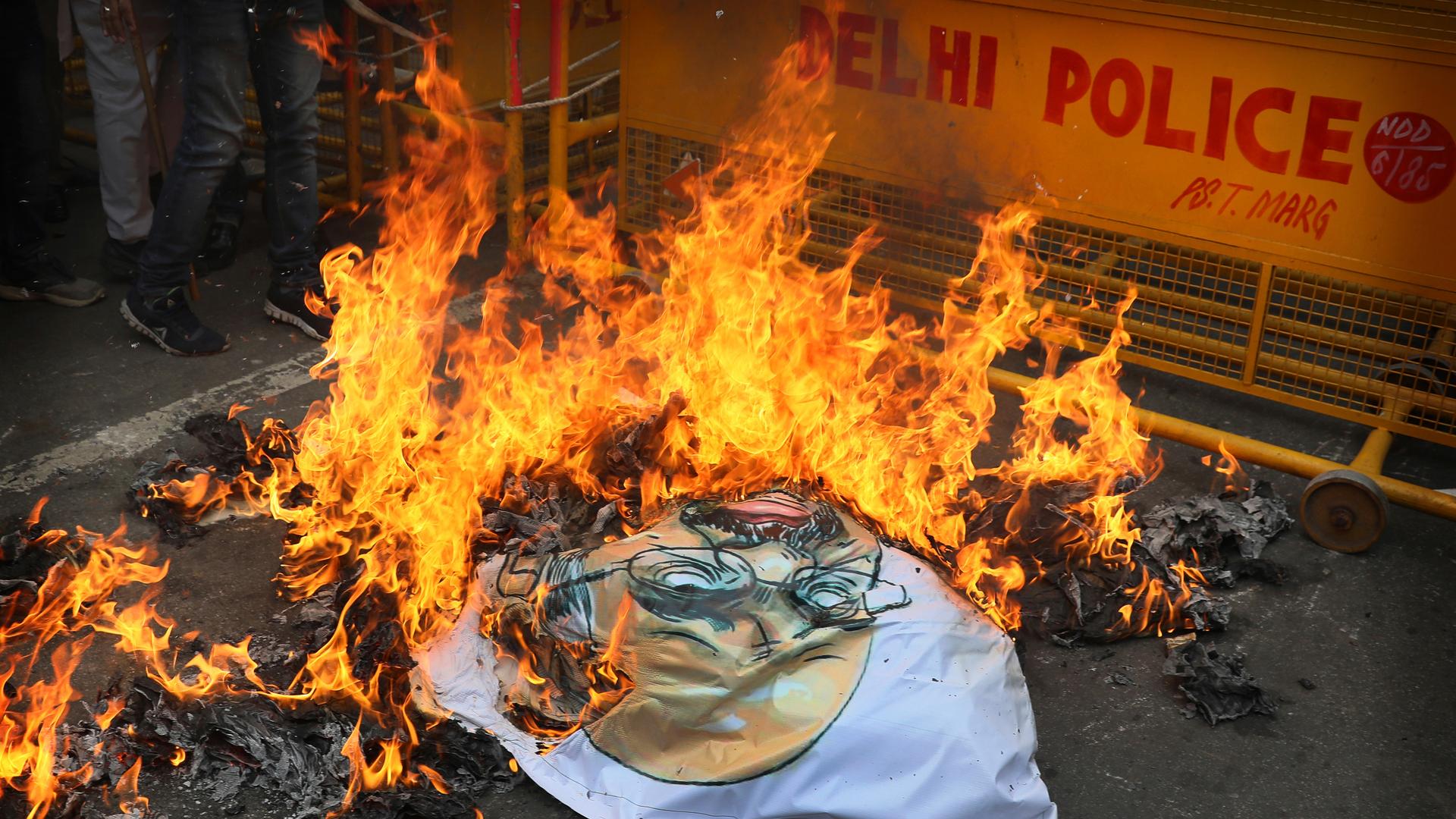An exclusionary right-wing populism has gripped the world for years now, but recently, a more inclusionary populism is pushing back.
Recent communal violence across New Delhi has left 42 people dead, hundreds injured and caused extensive property damage.
New Delhi hasn’t seen violence on this scale since the 1984 anti-Sikh riots. But other cities in India certainly have, including Ahmedabad, where the current prime minister of India, Narendra Modi, was in power during the 2002 anti-Muslim riots where 2,000 people died.
India isn’t alone. Protests recently in Hong Kong, Lebanon, Chile, Venezuela, Iran and France have involved hundreds of thousands of people taking to the streets across multiple generations, economic classes and backgrounds.
In the United States, organisers launched over 270 protests across the country in the wake of President Donald Trump’s impeachment acquittal.
In the last two years, more than a million people marched in the US in both the Women’s March and the March for our Lives. Organisers are planning more protests this year in the US under the banner of the Women’s March.
As a scholar of citizenship, and an Indian American, I have seen the dynamics and consequences of protests unfold in my research in both of my countries.
Many of these global protests have local immediate causes, but more of them present large, systemic demands for fairer governance.
For instance, in an area called Shaheen Bagh on the outskirts of New Delhi, is a poor neighbourhood where many Muslims fled who were displaced by sectarian riots in 2013. This is the same area where the ruling party ordered the police to attack university students and teargas them for protesting peacefully.
On a visit there in December, I witnessed what began as a non-violent sit-in by Muslim mothers and grandmothers against the discriminatory Citizenship Act swell as people from across the city started showing up with food and blankets to lend their support.
When hundreds of thousands of people gathered each night, this became about more than a single law. It became a peaceful protest against the violence and hate directed at minorities since the last two decades and against the Citizenship Act.
In early February, the party of Modi lost the New Delhi elections to the anti-establishment Aam Aadmi Party. Even though the elections were not about the protests, both parties made the protests an election issue.
After their loss, the Bharatiya Janata Party or BJP, used populist rhetoric about the protests to shore up its base. One of its failed candidates, Kapil Mishra, urged his supporters to attack the Shaheen Bagh protestors, thus setting the scene for the recent February riots.
Historically, over the last two decades, anti-minority, anti-Muslim, anti-black political rhetoric has become normalised.
In India, the Bhartiya Janata Party has used this rhetoric to come to power and defeat its long-time rivals, the Congress party. However, this populist rhetoric may be outliving its welcome as people demand real solutions to their problems and hold their leaders accountable.
What is truly ‘populist’?
While populism is traditionally defined by its anti-elitist and pro-people elements, contemporary popular protests are not about class divisions; they are increasingly about finding another way to ask for rights when electoral democracy proves inadequate.
While contemporary regimes argue citizenship is about “pure” ethnicity and religious communities, protestors claim citizenship is about solidarity across differences. What we see at the present moment is a battle over the definition of what is truly “popular”.
In the last decade, anti-immigrant and anti-minority populism grew in many countries, including the United States, France, and India. It succeeded because the passion of crowds is easy to manipulate, particularly against minorities and those perceived as outsiders.
Politicians always refer to this sort of politics as representing the “will of the people.”
However, at this moment, populism, as expressed by popular protests, has a more inspiring side. People are reminding their leaders that they serve at the will of the people.
In Hong Kong, protestors are agitating for more responsive governance. In Lebanon, the real demand is for non-sectarian politics. In India, it is about upholding its constitution’s commitment to secularism.
In many of these instances, protests have snowballed into popular movements. People express what they want by showing up in large numbers over a long period of time. This can be interpreted as a lack of faith in elections or a need for a more responsive government.
Commentators have blamed a slowing economy and lower incomes for public anger and protests; these factors certainly play a part. But protests such as those in Shaheen Bagh are also a rejection of authoritarian populism which is about the politics of identity and of hate.
But in order to do this, protesters have to put aside the ideology of difference and exercise their citizenship in its true sense. Organisers have to appeal to the larger social good and not to special identity-based groups. They have to invoke solidarity across differences, not differences based upon group identities.
Contemporary protests are a struggle over citizenship and the dying of an ethnocentric, tribal definition of belonging that has dominated the world since the fall of the Soviet Union in 1991.
The waves of protests in 2019 and early 2020 haven’t yet produced a clear result. The protests might be crushed, or transparent governance and accountability may replace the hate and division created by authoritarian populism. But the wave of protests in multiple sites across the world shows us that the citizens are hungry for better leadership.
Author: Shailja Sharma
Shailja Sharma is a Professor of International Studies at DePaul University and a Public Voices Fellow through The OpEd Project.
Source










Discussion about this post